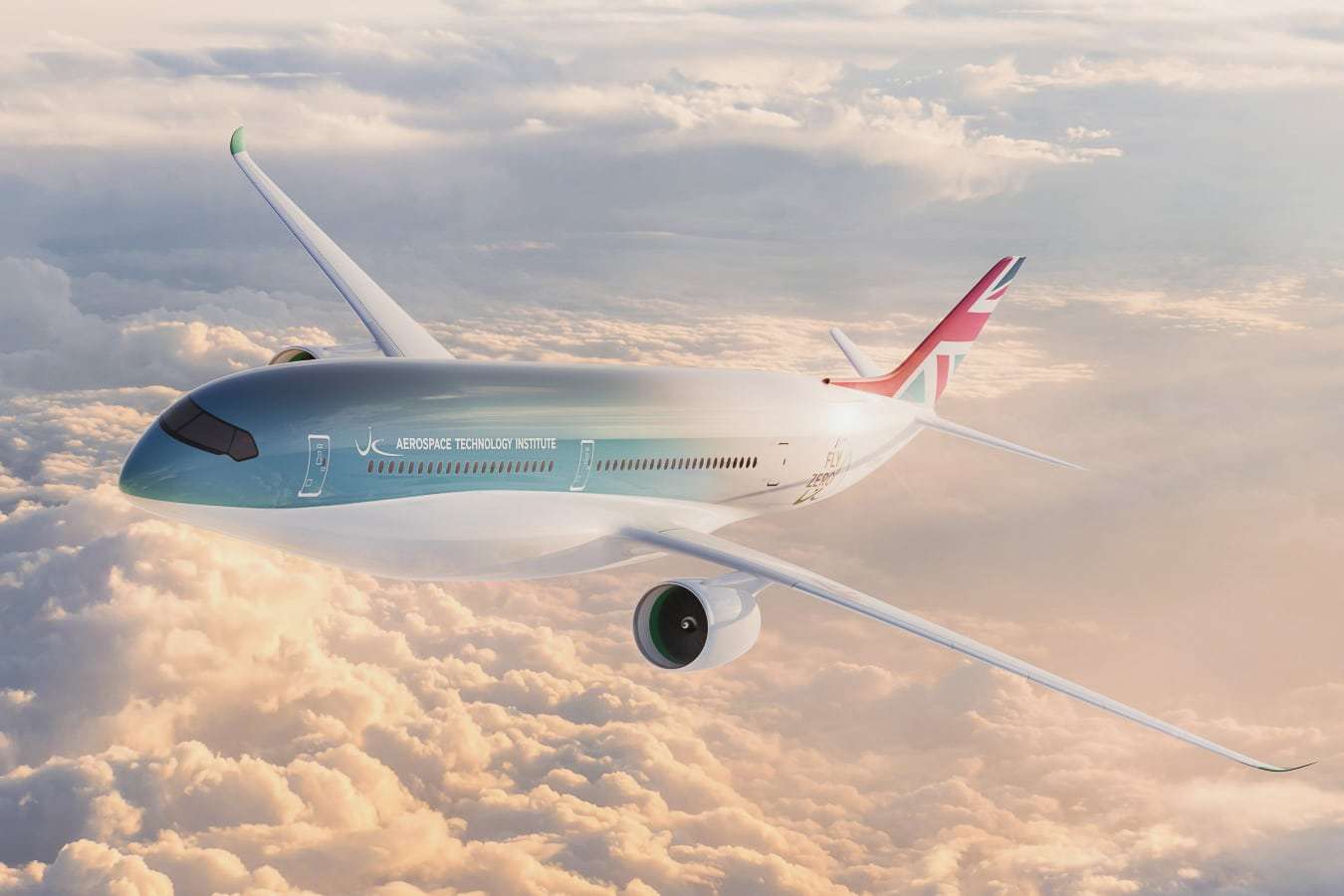With the race on to create net-zero flights, could hydrogen-powered planes be the answer to the airline industry’s emissions?
When it comes to carbon emissions, it’s no secret that air travel makes a significant contribution to the global total.
According to the International Council on Clean Transportation, the commercial sector produced 918 million tonnes of carbon in 2019 — 2.5 percent of global CO2 emissions.
Commenting on the figures, the organization said that “although global passenger operations are becoming more fuel-efficient, this is not happening fast enough to offset traffic growth.”
It added: “Commercial traffic has increased nearly four times faster than fuel efficiency improvement, and passenger aircraft CO2 emissions increased 33 percent between 2013 and 2019.”
Sustainable aviation
Various organizations within the sector are working towards slashing flight emissions. A promising option is sustainable aviation fuel (SAF), which is made from renewable and waste sources (like cooking oil).
As well as producing about 80 percent fewer emissions than petroleum-based fuel, it can be used with existing engines.

In December 2021, United Airlines flew the world’s first passenger flight on the maximum allowable SAF. Flying from Chicago to Washington D.C., using about 500 gallons of the fuel, 100 passengers were onboard.
However, under current regulations, only 50 percent SAF can be used on a flight, though it has been noted that if all flights are converted to using half SAF, that would slash more than one percent of global CO2 emissions.
Hydrogen-powered flights
But cutting emissions by 50 percent still leaves flights some way from net-zero. This is where hydrogen could come in, according to one industry expert.
Val Miftakhov is the founder and chief executive of ZeroAvia. Previously a nuclear researcher at Stanford Linear Accelerator, with a Ph.D. in Physics from Princeton University, he founded the company because of his passion in aviation.
According to ZeroAvia, it focuses its R&D on “developing a hydrogen-electric powertrain – using hydrogen fuel cells to power electric motors – as a viable way to tackle aviation’s climate change impacts at scale.”
The company has raised around $120 million in investment, from high-profile figures including Bill Gates and Jeff Bezos.
Hydrogen flight
The company modified a 20-seat Dornier 228 propeller plane for a 10-minute journey in the U.K., partially powered by a hydrogen fuel cell. The mission is set to be a crucial step on the road toward net-zero aviation.
Speaking about the flight, Miftakhov told the Times: “For large aircraft going relatively long distances, when you look at all the available energy sources, and the ways to convert those sources into propulsion in a clean way, you quickly realize that hydrogen is really the only option you have.”
The power of hydrogen
Research project FlyZero, run by the U.K.’s Aerospace Technology Institute, is currently working on how a zero-carbon-emissions aircraft can be developed, which it hopes to do within the decade.
FlyZero project director, Chris Gear, explained to the Institute of Mechanical Engineers has also spoken about why hydrogen has good potential when it comes to creating a greener aviation industry.

“Twenty percent of an aircraft’s take-off weight is fuel,” he said. “Hydrogen’s energy content is three times that of kerosene, six times that of ammonia, and up to 60 times that of batteries. This is why people see liquid hydrogen as a potential solution to reduce aircraft carbon emissions.”
The fuel does pose some challenges: manufacturing hydrogen at an industrial scale requires large amounts of electricity. In addition, storing hydrogen is difficult. In its liquid form, it must be kept at -253°C. If stored as gas, it must be kept under high pressure.
Net-zero commercial flights
However, it seems hydrogen is set to power potentially the first zero-emission commercial passenger flight in the world. ZeroAvia revealed in an official statement that currently developing a 20-seater aircraft, powered entirely by the element, to fly between Rotterdam The Hague Airport (RTHA) and London.
The company is working in partnership with Royal Schiphol Group and Rotterdam The Hague Innovation Airport in a bid to realize this ambition as soon as 2024, with 90-seat crafts set to hit the air by 2027.

Speaking about the ambitious plans, Sergey Kiselev, Head of Europe, at ZeroAvia, said: “This deal means that, in just three years’ time, you should be able to board a flight and make the hour journey between the U.K. and the Netherlands without worrying about the impact on the climate.
“Working with partners like Royal Schiphol Group, we are making true zero emission flights a reality for passengers in the first half of this decade.”
The ‘beginning of green aviation’
Ron Louwerse, CEO, of Rotterdam The Hague Airport, added: “Boarding a zero emission flight from Rotterdam to London is only the beginning of green aviation, and that will only be made possible by pioneering and promoting innovation in the sector.
“With the Netherlands as the testing ground for aviation, we strengthen our competitive position, knowledge base and business climate.”
Related on Ethos:


